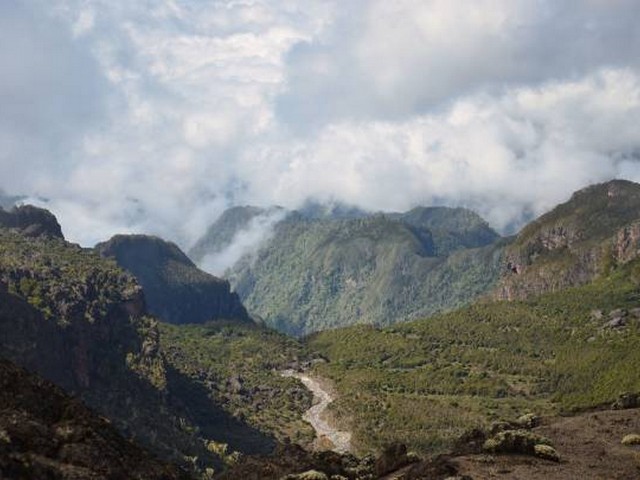Capture the Wild: Kilimanjaro Nature Photography for Best Wildlife Shots
Introduction: An Expedition Beyond the Ordinary
Welcome to the world of towering peaks, sprawling savannas, and breathtaking wildlife. As the leading tour operator in Tanzania, the Kilimanjaro Centre for Trekking and Ecotourism (KCTE) invites you to join us on a photographic safari that transcends the typical. Kilimanjaro isn’t just Africa’s highest peak; it’s a vibrant ecosystem teeming with rare wildlife and stunning landscapes. For photographers, Kilimanjaro offers more than just a climb—it’s an opportunity to capture nature in its most raw and majestic forms. Whether you’re a seasoned photographer or a budding enthusiast, our guide to "Kilimanjaro Nature Photography: Best Wildlife Shots" will equip you with the insights to bring home not just photos, but stories.
The Magic of Kilimanjaro’s Ecosystems
Unveiling the Layers of Beauty
Kilimanjaro’s unique ecological system is a tiered canvas waiting for the keen eye of a photographer. From the dense rainforests at its base to the alpine desert and the snowy summit, each zone offers distinct wildlife and flora. Understanding these layers is key to anticipating the kind of wildlife interactions you can capture.
The Forest Zone: A Birdwatcher’s Paradise
Begin your ascent, and your journey through Kilimanjaro’s lush rainforest zone. Here, the air is thick with the calls of tropical birds. This zone is perfect for capturing vibrant birdlife such as the Hartlaub’s Turaco or the Kilimanjaro White-eye. The dappled light filtering through ancient trees creates a perfect setting for moody, ethereal shots.
The Heath and Moorland: Where Giants Roam
As you ascend to the heath, the landscape opens up, and the giant groundsels and lobelias appear like something out of a fantasy novel. This zone provides opportunities to photograph unique high-altitude vegetation and the occasional elephant that wanders through these lofty heights.
The Alpine Desert and Beyond: Stark and Surreal
The alpine desert offers a stark contrast to the lush zones below. This area is perfect for landscape photographers looking to capture the rugged beauty of volcanic rocks set against the soft glows of alpenglow.
The Summit: Snow at the Equator
Reaching the summit can give photographers not only bragging rights but also shots of snowy landscapes rarely associated with Africa. The juxtaposition of ice and tropical sunrises provides a dramatic backdrop for powerful photography.
Wildlife Photography Tips on Kilimanjaro
Best Times for Wildlife Shots
Timing is everything in photography. The best wildlife shots can often be captured during the early mornings or late afternoons when animals are most active. The golden hours provide soft natural lighting, enhancing the magical ambience of the wilderness.
Gear and Preparation
A successful photography trek requires the right gear. A sturdy tripod and a variety of lenses (wide-angle for landscapes and a telephoto lens for wildlife) are essential. Also, ensure your camera bags are weather-resistant, as conditions can vary dramatically.
Ethical Photography Practices
At KCTE, we advocate for responsible and ethical photography. This means maintaining a respectful distance from wildlife, avoiding any actions that might stress the animals, and adhering to park rules at all times.
The KCTE Advantage in Photography Tours
Guided by Experts
Our guides are not only trekking professionals but also seasoned in helping photographers find those perfect spots for capturing Kilimanjaro’s wildlife and landscapes. Their expertise and local knowledge can be the difference between a good photo and a great one.
Customizable Tours
Understanding that photographers have specific needs, we offer customizable tours that focus on maximizing your time in the most photogenic zones. Whether you want to linger in the rainforest or spend extra days at the summit, we can arrange that for you.
Commitment to Conservation
By booking with KCTE, you contribute to the preservation of this magnificent mountain. A portion of all proceeds goes directly to conservation efforts and supporting local communities.
Why Book Your Photographic Journey with KCTE?
Kilimanjaro offers more than just a climb; it’s an invitation to experience and capture the essence of Africa in its most untouched forms. At Kilimanjaro Centre for Trekking and Ecotourism, we are committed to providing an experience that is respectful to nature while fulfilling the creative aspirations of every photographer.
FAQ: Perfecting Your Kilimanjaro Photographic Experience
What is the best season for nature photography on Kilimanjaro?
The dry seasons, from June to October and from December to March, are ideal for photography, offering clear skies and the best visibility.
How physically prepared should I be?
While you don’t need to be an athlete, a good level of physical fitness will help you handle the rigors of trekking and make the most of your photography experience.
Can I rent photography equipment from KCTE?
Currently, we do not offer equipment rentals, but we provide detailed advice on what equipment you should bring based on your specific tour.
Are there any photography workshops offered during the trek?
Yes, we occasionally offer workshops led by professional photographers. Please inquire about our upcoming schedules.
Capture the Peak of Wilderness Artistry with KCTE
Embark on a journey where each step adds a layer to your story, and every picture holds a universe of memories. Book your Kilimanjaro climbing and photographic tour with Kilimanjaro Centre for Trekking and Ecotourism (KCTE) today, and turn your dreams of capturing the wild essence of Kilimanjaro into a stunning reality. Join us as we ascend not just a mountain, but also the heights of photographic excellence. Contact us to start your adventure.




